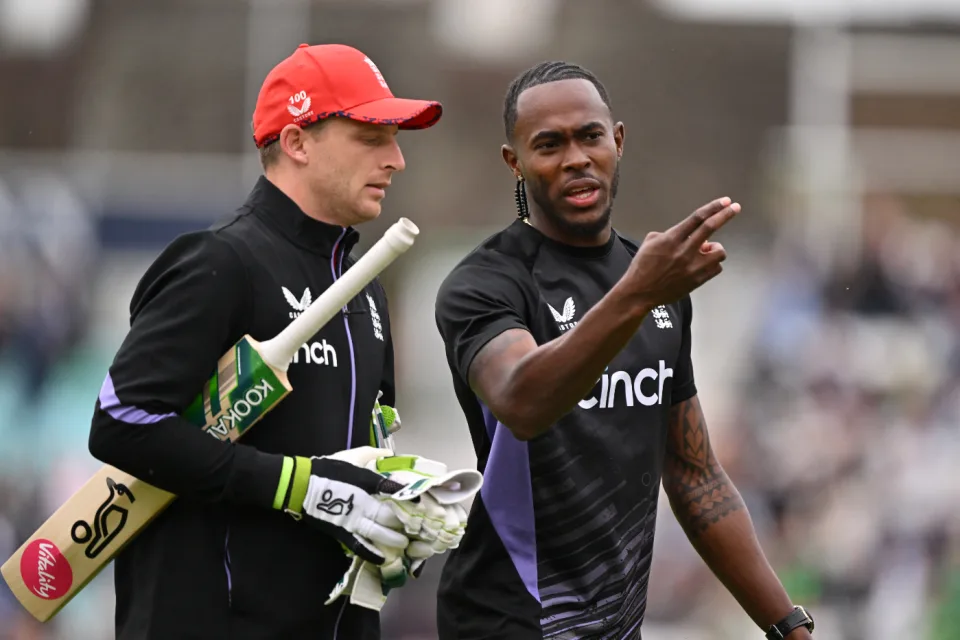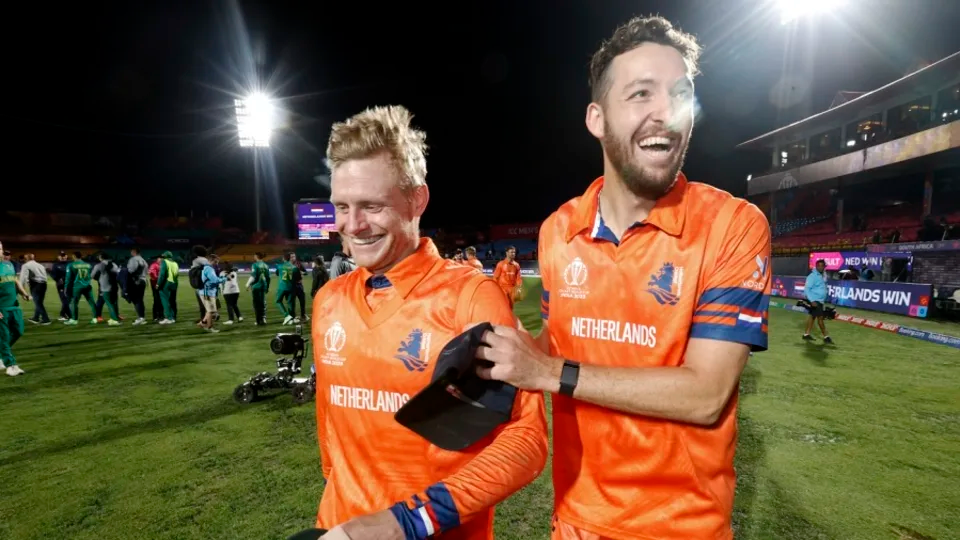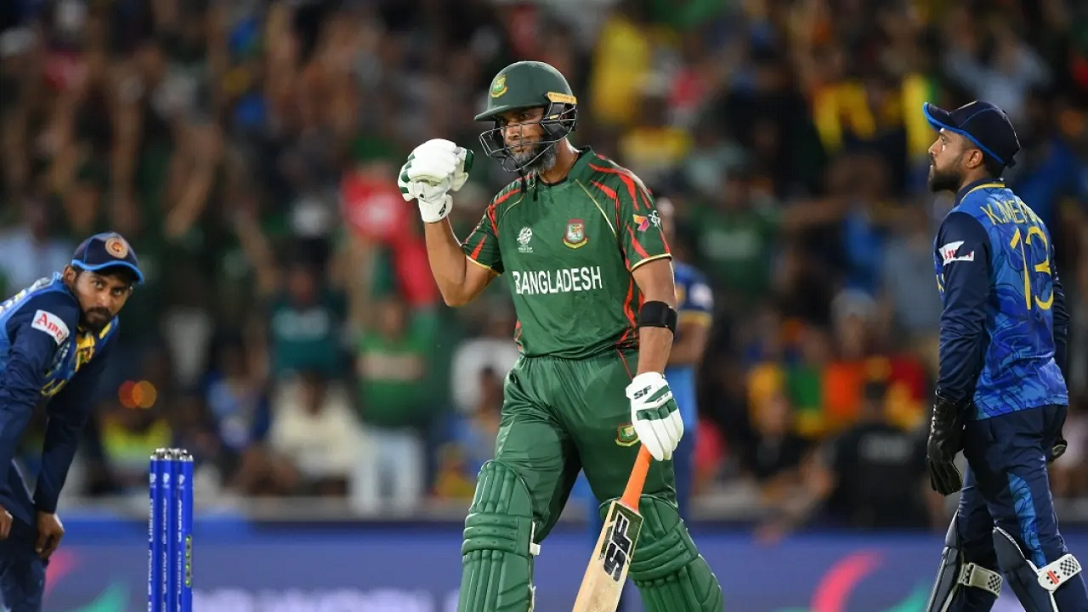Sports
Suncorp Hoodoo!

by Rajitha Ratwatte
The Bledisloe dead rubber but a game with points for the tri-nations rugby tournament played at Suncorp Stadium, Brisbane. The Wallabies had lost only once at this venue and is there something in a venue that has an outcome on the result?
All blacks had rung in some changes and so had the Wallabies. A humid day in Brisbane and a rather hurried transit to the ground for the Blacks and Nick Berry refereeing a game expected to be an easy win for the NZ team. The Wallaby no1 James Slipper led the team out in his 100th appearance for Australia.
Within two minutes of the kick-off, a nice little chip kick from Reece Hodge playing at no10, combined with a favourable bounce of that ever so fickle rugby ball saw the Wallabies score the first try mid-left. A relatively easy kick was missed by the Aussie no10 and the Wallabies were off to a 5 – 0 lead.
Eight minutes into the game, a desperate attack by the All Blacks with equally resolute defence from the Yellow Jerseys culminated in Ricco Ioane getting over the line from his left-wing. The kick from the extreme left of the posts saw Jordan Barret, who had the kicking duties for the game hit the upright. The kick missed score 5 – 5.
Scott Barret the third of the Barret boys showed great skills in loose play and won the ball and his big brother Beauden made a great touch kick in the 13th minute. However poor positional play by the All Blacks no1 Karl Tu’inukuafe gave away a defensive penalty deep in Wallaby territory.
Around the 20th minute Seevu Reece who was playing on the right-wing and from whom great things were expected, seemed to be trying too hard and got pinged twice in succession for playing the ball when on the ground and gave away penalties, the second of which was mid-left and around 30 meters from the posts. Easily kickable for Hodge and over it went. Wallabies lead 5 – 8.
Then the card game began! Yet another microscopic analysis by the TV ref of a tackle reached a conclusion that the All Black no3 Ofa Tuungafasi while tackling had struck his Wallaby opponent on the point of his jaw with his shoulder. This was simply due to the different heights of the players and obviously had no malicious intent at all. There was plenty of malicious play going on from the Aussies as is their style but the Referees’ got it completely wrong and what should have been a simple penalty or even a yellow card at worst was declared a red card offence! In the 23rd minute of the game, the All Blacks were reduced to 14 players for the rest of the game. A vital lifter in the line out had been summarily dispatched from the game.
A scrum came up in the 28th minute and there was a problem as the no3 had been red-carded! Akira Ioane the elder brother of Ricco ( we had two sets of brother representing NZ in this game – 3 Barrets’ and 2 Ioannes’) who had a strong game had to be benched to get another prop on the field and midfielder Lennert- Brown had to bind at no6 in the scrum. Sam Cane who had been targeted for some foul play by the Aussies, unseen by all the referees, of course, intercepted an Aussie pass from the scrum with great skill that led to a kickable penalty in the 32nd minute. It was around 36 meters out but in front and Jodie Barret was not going to miss that. 8 – 8 scores level.
An almost identical situation that had led to the first red card of the game happened but was totally ignored by the on-field ref. However, the pedantic eye of the TV camera spotted it and the cards that seemed to be burning a hole in the referee’s pocket came out again. Red it was against Australia this time, establishing consistency according to the pundits! Both sides down to 14 players for the rest of the game.
The Customary and obligatory Aboriginal welcome speech at the start of the game saw an Aboriginal elder describe the game as a game of rugby league by mistake. Maybe the Ref was under the impression that there were too many players on the field!
The All Blacks attacked relentlessly and Aussie defence held up. But four penalties in a row inside the 22-meter line saw the card pack being shuffled again and out came a Yellow against the Aussie no11. Seven in a row on another occasion only resulted in penalties. Surely the option of a penalty try is available for so many professional fouls from inside the 22-meter line? The half-time score remained tied at 8 – 8. There were certain commentators describing the game as entertaining but only if you thought it was a brawl of some sort, not a game of Rugby Union!
The referee started the second half by missing a blatant forward pass that had to be pointed out to him by his touch judge. Aussies now had 13 players against the All Blacks 14. Four minutes into this half the Aussies were awarded a kickable penalty, exactly what they wanted with two players short and Reece Hodge made no mistake 8-11 Aussies in front. The 51st minute saw a forwards try off a line out for the All blacks with no2 Codie Taylor managing to ground the ball extreme right. A great conversion by Jodie Barret saw the All Blacks back in the lead 15 -11. In the 54th minutes, the Aussies were looking very threatening, getting the better of the Scrums and of course, engaging in what is now called gamesmanship – taking every opportunity to rough up their opponents and put extreme pressure on the referee. A blatant hand in the scrum was not seen by the referees and the All Blacks thought they got out of jail but it was not to be. A scrum penalty was to follow soon enough, it was around 40 meters out but straight in front and was duly knocked over by Reece Hodge who specializes in this sort of kick. 15 – 14 All Blacks just in front.
Ardie Savea made a few strong runs but the All Blacks forwards were feeling the humidity and showed it by not getting to rucks and mauls in time. Maybe the bench should have been used a little earlier due to the weather? The Linesman or the assistant referee as he is known these days spotted Scott Barret doing what was deemed playing the ball of the ground. What it looked like was a feeble wave of his hand at the Aussie no 9 who then dropped the ball while making a pass.
When the whistle went we all thought it was for a knock-on but lo and behold it was another time to shuffle the cards and a yellow to the youngest of the Barret brothers. So we had two red cards and two yellow cards during this brawl that has been described elsewhere as an “entertaining game of Rugby football”, which it wasn’t!
In the 74th minute, the Wallabies scored mid-left through their substitute prop wearing the no18 jersey. A veritable tank of a man who was totally unstoppable from five meters out. The goal was completed and the score read 15 – 24 All Blacks behind. AB’s were not giving up and in the 78th minute Tupou Vaa’I scored for them under the posts and the resulting kick saw the score move to 22 – 24. Brilliant and desperate defence from Korobiete on the wing for Australia resulted in the All Blacks being unable to score further and the match ended with a 2 point win for the Wallabies who had been trashed just a week ago in Sydney by 37 points.
All in all, it was a tight game but lacked any brilliant passages of play and the antics of the referee left one wondering if we were watching a game of cards or a game of rugby. However, the Aussies played to their strengths, they don’t have the three quarters to match the Kiwis and can not play the open running rugby that we saw in the past two games. However, the Aussies know how to spoil and how to stretch the rules and play the referee. They did this to perfection and got the better of a much superior side. This win will do a lot for Aussie rugby and probably teach the All Blacks never to get complacent against the Aussie battlers.
It is true that the Aussies won the game and it will probably result in some added interest from spectators who were getting tired of watching the Wallabies lose time after time. It may also allow the Wallabies to try and contrive a situation when they can secure the tri-nations trophy, or whatever this latest money-making scheme for the TV networks is called! Whoever won and whoever stands to benefit, it wasn’t the great game of Rugby union!
supersubsports@gmail.com
Sports
England face Australia in the battle of champions

The first truly heavyweight clash of this expanded T20 World Cup format comes freighted with both history and subplots. A rematch of the 2010 World T20 final at Kensington Oval, the match pits Jos Buttler’s defending champions – who are aiming to become the first team to retain the trophy – against the Australian winning machine, victors at the 2021 edition and current world title-holders in Test and ODI cricket. And that’s before you throw in the Ashes for afters.
Already there is added pressure on England, after the rain in Bridgetown led to a share of the points in their opener against Scotland (and that having conceded 90 runs from 10 overs without taking a wicket in a tepid bowling display). Lose to their oldest rivals and it will leave their Super 8 prospects open to being waylaid by the perils of net run-rate calculations, or worse.
The Scotland match was the third abandonment in five suffered by England, after a rain-affected home series against Pakistan, which has clearly hampered their readiness for this campaign after almost six months without playing T20 together. It does not take much for a side to click in this format – and England looked in decent shape when they did get on the field against Pakistan – but Buttler will be anxious for things to go their way on Saturday, if only to avoid further questions referencing the team’s disastrous ODI World Cup defence last year.
Australia, under the laidback leadership of Mitchell Marsh would love nothing more than to add to the English sense of jeopardy – having helped bundle them out of the tournament in India on the way to taking the crown. Their head to head record is less impressive in T20 however, with England having won six of the last seven completed encounters, as well as that 2010 final.
Despite a wobble with the bat, Australia avoided mishap against Oman earlier in the week, the experience of David Warner and Marcus Stoinis shining through in difficult batting conditions. Surfaces in the Caribbean – not to mention those games staged in the USA – have already had teams scratching their heads; rather than the “slug-fest” England had prepared for, following a high-scoring tour of the Caribbean in December, it looks as if boxing smart may be the way to go.
Speaking of Warner, this could be the last time he faces up against England in national colours – and another match-winning contribution would likely reduce the chances of them meeting again in the knockouts. On the other side of the card is Jofra Archer, fresh from an emotional maiden outing at Kensington Oval and ready to take on Australia for the first time in any format since 2020. Can Mark Wood fire up England’s campaign, as he did during last summer’s Ashes? Will Pat Cummins be back to harass the old enemy once again? Seconds out, it’s almost time to rumble.
Cummins is set to return after being rested for the Oman game, which saw Mitchell Starc leave the field with cramp. Starc is understood to be fine and could keep his place – which would likely see Nathan Ellis miss out. Marsh is still not fit to bowl, with Australia likely to continue with the allrounder combination of Stoinis and Maxwell to give them cover.
Australia (probable XI): David Warner, Travis Head, Mitchell Marsh (capt), Glenn Maxwell, Marcus Stoinis, Josh Inglis (wk), Tim David, Pat Cummins, Nathan Ellis/Mitchell Starc, Adam Zampa, Josh Hazlewood
The one change England may consider is Reece Topley coming in for Wood, with the expectation that there will be some rotation among the seamers through the course of the tournament.
England (probable XI): Phil Salt, Jos Buttler (capt & wk), Will Jacks, Jonny Bairstow, Harry Brook, Liam Livingstone, Moeen Ali, Chris Jordan, Jofra Archer, Adil Rashid, Reece Topley/Mark Wood
[Cricinfo]
Sports
South Africa up against their bogey team in batter-unfriendly New York

Once is coincidence, twice is a clue, and three times is proof.
To paraphrase Agatha Christie, that is the narrative around South Africa’s meeting with Netherlands at this T20 World Cup.
The Dutch beat South Africa at the 2022 tournament and ended their semi-final hopes in a match where South Africa appeared to be sleep walking, and then beat them again at the 2023 ODI World Cup, where they exposed South Africa’s vulnerability in the chase. If they to do the treble, not only will Netherlands take the lead in Group D, but they will offer conclusive evidence of the threat they pose to Full Members, especially South Africa.
Of course, it will take some doing after South Africa’s opening performance against Sri Lanka, where they reduced their opposition to their lowest T20I total and chased it down in fairly straightforward fashion thanks to the most stable middle-order of their white-ball era. In Aiden Markram, Tristan Stubbs, Heinrich Klaasen and David Miller, South Africa have bankers and big-hitters and, for this match, they also have the advantage of experience. They’ve already played at Eisenhower Park, and have first-hand knowledge that run-scoring doesn’t come easily;Klassen said they are prepared to use their “cricket brains” and play “smarter cricket”.
But the conditions could be good news for Netherlands, who are not naturally a line-up of big hitters and build their innings on a foundation of turning ones into twos. In other words, they tend to take a slightly more conservative approach to batting, which may work well here, but they’ll be wary of the uneven bounce of the surface and will have to come up with plans to counterattack especially against South Africa’s seamers. Their own bowlers were exemplary in Dallas and will look to build on that performance against a line-up that will likely be more proactive than Nepal’s, but who they have managed to keep quiet not once, but twice in the past. Third time’s the charm, they say.
Anrich Nortje’s stunning return to form against Sri Lanka means South Africa may not have to tinker with the bowling combination, and Gerald Coetzee and Tabraiz Shamsi may have to wait their turns to get a game. The batting line-up should be unchanged, with no space for Ryan Rickelton yet.
South Africa: Quinton de Kock (wk), Reeza Hendricks, Aiden Markam, Tristan Stubbs, Heinrich Klaasen (wk), David Miller, Marco Jansen, Keshav Maharaj, Kagiso Rabada, Ottneil Baartman, Anrich Nortje
Conditions in New York may tempt Netherlands to include an extra seamer and they have Kyle Klein in their squad. But it could come at the expense of a shortened batting line-up and they may not want to risk that.
Netherlands: Michael Levitt, Max O’Dowd, Vikramjit Singh, Sybrand Engelbrecht, Scott Edwards (capt, wk), Bas de Leede, Teja Nidamanuru, Logan van Beek, Tim Pringle, Paul van Meekeren, Vivian Kingma
[Cricinfo]
Latest News
Mustafizur, Rishad, Hridoy dazzle in Bangladesh’s tight two-wicket win over Sri Lanka

Nuwan Thushara’s last over brought Sri Lanka screaming back into the match,as he first bowled Rishad Hossain, and then nailed Taskin Ahmed in front of the stumps with a pinpoint swinging yorker. This left Bangladesh eight wickets down, with 12 runs still to get.
However, the experienced Mahmudullah was at the crease for Bangladesh, and despite some further nervy moments, pushed Bangladesh across the line off the last ball of the 19th over.
But this was a match chiefly decided by Bangladesh’s own outstanding bowling. Mustafizur Rahman was the best among them, using shorter lengths and his cutters efficiently, to claim figures of 3 for 17. Rishad Hossain’s three-for through the middle overs also kept Sri Lanka quiet.
Mustafizur was instrumental in Sri Lanka’s downward spiral through the middle overs, which culminated in a crash-and-burn end. Ultimately, their inability to find boundaries, or even rotate strike against good Bangladesh bowling resulted in their downfall. A score of 125 for 9 always seemed poor on a decent pitch, even if their bowlers made a match of it in the end.
Brief scores:
Bangladesh 125 for 8 in 19 overs (Towhid Hridoy 40, Litton Das 36; Dhanajaya de Silva 1-11, Nuwan Thushara 4-18, Wanidu Hasaranga 2-32, Matheesha Pathirana 1-27) beat Sri Lanka124 for 9 in 20 overs (Pathum Nissanka 47, Dhananjaya de Silva 21; Tanzim Hasan Sakib 1-24, Taskin Ahmed 2-25, Mustafizur Rahman 3-17, Rishad Hossain 3-22) by two wickets
[Cricinfo]












